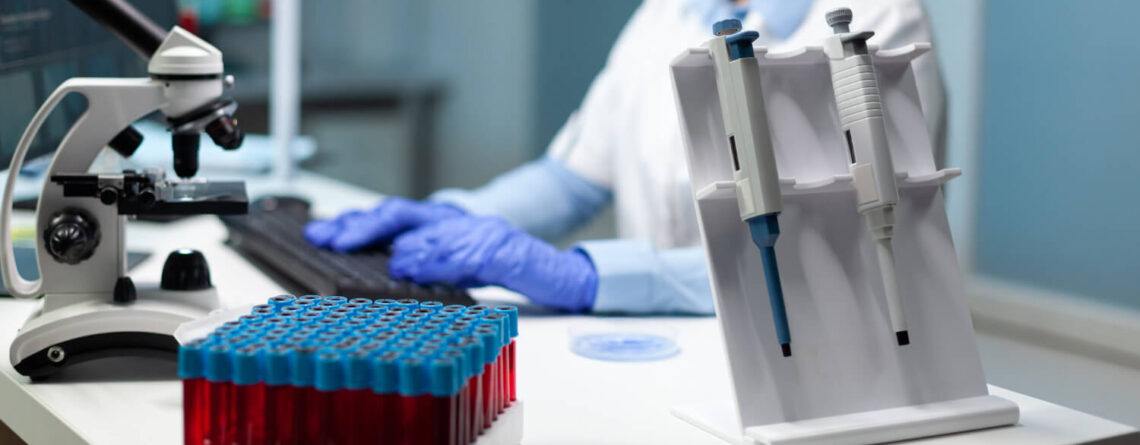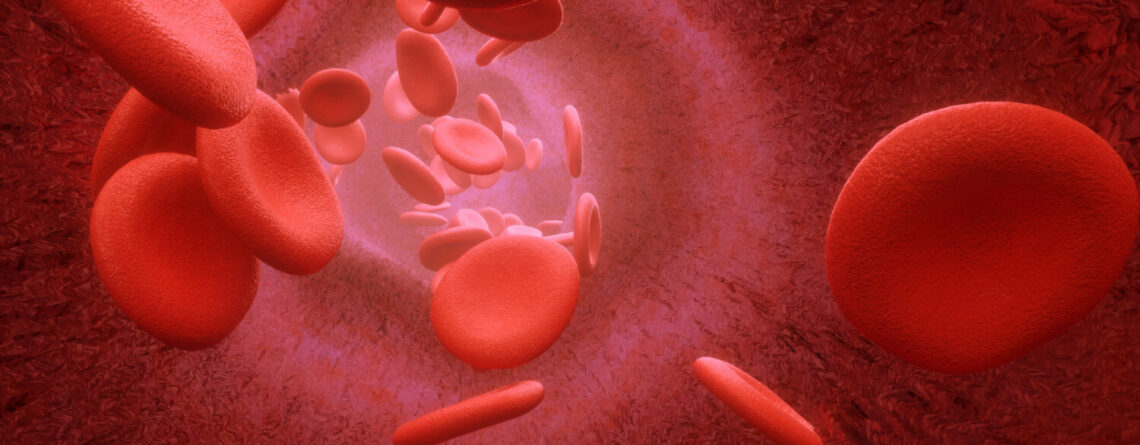Plasma cell myeloma (plasmacytomais a malignant B-cell tumor. Its substrate is a plasma cell (plasmocyte).Plasma cells are formed from B cell lymphocytes. Their main function is protective protein compounds production – immunoglobulins, in response to pathogenic microorganisms penetration into the body.
In plasmacytoma, as a result of chromosomal abnormalities, pathological cells arise that differentiate into plasma cells, which, in turn, begin to produce immunoglobulin of the same class(monoclonal immunoglobulin)in excessive quantities. The structure of immunoglobulin is normal, but its production or its individual components significantly exceeds physiological needs of the body. Defective immunoglobulin cannot perform its protective function, while the production of normal protective antibodies decreases.
Plasma cells accumulate in bone marrow and affect skeleton bones, tissues of internal organs associated with lymphoid tissue. Over time, pathological plasma cells in bone marrow displace normal hematopoietic cells, as a result of which the number of leukocytes, platelets, and erythrocytes in blood decreases, as their formation is disrupted.

Especially good results are achieved in Hematology Oncology centers of Israel. That is why our Maimonides Multidisciplinary Medical Center operates in close cooperation with the best Israeli Hematology Oncology clinics, and we have chosen Israeli medicine as one of the most effective in the world as a model for providing medical services. In Hematology Oncology Department of Maimonides Medical Center, each individual clinical case is jointly managed by attending hematologist in clinic, the head of the department, and the responsible hematologist-oncologist directly from Israel. Thanks to such a professional team, we manage to achieve success even in the most difficult cases. Although all medical and diagnostic procedures are adapted to the realities of life in Ukraine, they take place under the close supervision of the best practicing doctors in Israel.
It's no secret that malignant diseases treatment, and even more so of oncological hematological ones, is an expensive process. That is why we have created an opportunity for our patients to receive financial assistance for the necessary medical and diagnostic procedures. It is possible because Maimonides Medical Center works under the patronage of “Keren Or for our Child” the Charitable Foundation.
Plasmacytoma causes and types
The causes of plasmacytoma development have not yet been definitively established. The impact of genetic disorders that may occur under the influence of provoking factors.The impact of genetic disorders that may occur under the influence of provoking factors (chronic viral infections, staying in radioactive zone, long-term exposure to toxic substances, taking drugs that suppress immunity, etc).
With intraosseous development of tumor process, the cortical bone layer is destroyed and plasmacytoma goes beyond the bone plate, sprouting into surrounding tissues or the spinal canal.
In case of hematogenous spread of plasma cells, an isolated extramedullary plasmacytoma is formed in organs and tissues that are not anatomically related to bone. Invasive procedures and surgical interventions(for example, laparotomy) may be the cause of extramedullary spread of tumor cells).
Plasmacytoma can have a single pathological focus or a generalized course(various organs and systems of the body are involved in pathological process, which is observed in patients of the older age group).
Plasmacytomas are divided into:
- Solitary plasmacytoma - skeleton bones (ribs, spine, skull, pelvic bones) are usually involved in pathological processes
In addition, solitary plasmacytoma without clonal plasma cells presence in the bone marrow and solitary plasmacytoma with a low level of bone marrow involvement are distinguished. - Extramedullary plasmacytoma – pathological process can be detected in any organs and tissues, but the most frequent localization is throat, liver, skin, lymph nodes, lungs, pleura, kidneys, pancreas.
Extramedullary plasmacytoma accounts for less than 5% of all plasma cell neoplasms. - In addition, plasmacytoma can be one of manifestations multiple myeloma.
Plasmacytoma symptoms
The symptoms of the disease depend on lesion location and pathological process extent.
Symptoms such as bone pain(in more than 70% of patients at the onset of the disease) skeletal bone fractures, spinal cord compression, and radicular(root)pain indicate damage to bone tissue. Most often, pain is localized in back and ribs, less often in limbs.
Solitary plasmacytoma of bones is characterized by calcium increase in the level in blood, which is accompanied by nausea, vomiting, weakness, constipation, increased thirst.
Some patients do not have any symptoms, and the tumor process is discovered accidentally – during diagnostic measures for other reasons.
The most frequent symptoms of extramedullary plasmacytoma with damage to upper respiratory tract are nasal congestion, nosebleeds, hoarseness of voice, hearing loss/decrease.
Extramedullary plasmacytoma of the intestine is characterized by abdominal pain presence (stomach pain), intestinal obstruction, nausea, vomiting, abdominal distension, and constipation. The here may be malabsorption syndrome(impaired absorption in intestines), which causes weight loss.
Gastric bleeding is characteristic of extramedullary plasmacytoma of stomach. In isolated cases, plasmacytoma can cause jaundice and intestinal perforation.
Generalized plasmacytoma ((multiple myeloma) can be accompanied not only by damage to bone tissue, but also to kidneys, when pathological protein is deposited in the form of cylinders in renal tubules – cylinder nephropathy. Renal failure is manifested by nausea, vomiting, malaise and weakness. The accumulation of abnormal cells in bone marrow disrupts normal hematopoiesis, which leads to anemia (due erythrocytes growth suppression), hemorrhagic syndrome (bleeding) due to a platelets lack.

Diagnosis methods of plasmacytoma
As you know, the earlier the diagnosis of a malignant disease is established, the better prognosis and treatment result. Therefore, high-quality and quick diagnosis is an extremely important stage.
Maimonides Clinic uses only modern equipment of an expert class, all our doctors perfectly master all examination methods of a patient plasma cell myeloma suspected, are able to correctly interpret the received data, which helps them to create a modern, individual and effective treatment plan.
Making up a "solitary plasmacytoma" diagnosis requires a very careful assessment to exclude generalization of the process ((multiple myeloma).
From laboratory examinations, if plasmacytoma is suspected, the following are prescribed:
- general (clinical) blood analysis;
- biochemical blood analysis (total protein, albumin, LDH, urea, creatinine with determination of creatinine clearance and glomerular filtration rate, bilirubin, AST, ALT, alkaline phosphatase, calcium, potassium);
- general urinalysis;
- determination of protein amount in urine;
- coagulogram;
- ratio of protein fractions detection in blood and urine by electrophoresis with quantitative determination of monoclonal and polyclonal immunoglobulins;
- immunoglobulins monoclonality study in blood and daily urine by immunofixation method with quantitative determination of the M-gradient level;
- content of free light chains in the blood exemination;
All patients a plasmacytoma to obtain a cytological specimens of bone marrow. Then to confirm and formulate the diagnosis is provided a cytological and, if necessary, immunophenotypic examination of bone marrow.
All patients a generalized process (multiple myeloma)suspected, and for the assessment of bone marrow hematopoiesis before collecting blood stem cells or in case of suspected disease relapse, are recommended to a trepanobiopsy and conduct a histological examination of obtained material.
Bone marrow chromosome examination (for example, applying genetic research methods such as FISH and immunohistochemistrycan reveal specific karyotypic abnormalities of plasma cells, the presence of which is associated with differences in the patient's life expectancy.
Molecular genetic tests are used to detect certain types of malignant cells, as well as personalized immunotherapy selection (biological, targeted). An example of such modern diagnostics is systems for molecular genetic testing. Among them are th Foundation One and Caris Molecular Testing.
We send all materials after the biopsy to the world's best pathogistological laboratories (Israel, Germany, USA).Thanks to such double checks, we are absolutely sure of diagnosis correctness and effectiveness of the selected treatment tactics.
Completed - diagnostic methods use:
- CT of all parts of spine, chest, pelvis (low-dose CT of the entire skeleton is preferred);
- if CT scan is absent, it is recommended to perform bones X-ray examination: X-ray (including skull, chest, all parts of spine) to clarify the presence and extent of bone lesions;
- according to indications, MRI examinations of all parts of the spine and pelvis are performed. All necessary diagnostic procedures can be performed directly in the clinic, without leaving Ukraine.

Plasmacytoma modern treatment
One of important advantages of malignant blood diseases treatment at Maimonides Medical Center is the application of a comprehensive approach to each individual clinical case. Struggling against the disease, doctor uses the entire available arsenal of methods.
Therapy is always a combination of two, three, or even more methods. As a rule, treatment regimen includes systemic drug chemotherapy in combination with radiation therapy and hematopoietic stem cell transplantation. In some cases, certain treatment program ((targeted drugs, immunobiological drugs, etc).
Since plasmacytomas are highly sensitive to radioactive exposure, radiation therapy is the main treatment method. o reduce radiation therapy side effects, radiation oncologists of our clinic use modern types of radiation therapy, рarticularly it is radiation treatment with adjustable radiation intensityIMRT). This method of cancer treatment involves point impact on neoplasms and healthy organs and tissues preservation. Radiation duration and volume of IMRT method is significantly less than with standard radiotherapy.
Chemotherapy with auto-hematopoietic stem cells transplantation (auto-HSCT) is used, as a rule, in patients younger than 65 years old and without serious concomitant diseases. As a result, bone marrow can produce new blood cells. For patients older than 65 years, as a rule, therapy based on new drugs according to special protocols. If patient is 65-70 years old and does not have serious concomitant diseases, he can also become a candidate for chemotherapy and stem cell transplantation.
Surgical intervention is possible for a solitary plasmacytoma localized in an organ or tissue, where there is free access, which allows to completely remove the pathological tumor.
Chemotherapy is often used in plasmacytoma treatment. Good results can be achieved adding a proteasome inhibitor such as bortezomib, carfilzomib, or ixazomib, or the immunomodulators lenalidomide or thalidomide, to standard protocols. Other chemotherapy drugs, including cyclophosphamide, bendamustine, doxorubicin, and its analog liposomal pegylated doxorubicin, are also more effective in combination with an immunomodulatory drug(thalidomide, lenalidomide, or bortezomib).
Targeted therapy with monoclonal antibodies that target myeloma cell proteins can also be highly effective, especially in relapsed or refractory myeloma, and include daratumumab, isatuximab, and elotuzumab. These antibodies are more effective in combination with lenalidomide or pomalidomide and dexamethasone.
CAR-T cells therapy is the latest innovation in fight against oncohematological diseases, including myeloma. Production of such drugs requires a modern genetic engineering laboratory and highly qualified personnel. CAR-T cells are made individually for each patient. To do this, a blood sample is first taken from patient, and leukocytes are separated from it. Further, these leukocytes are modified through genetic engineering in such a way that chimeric antigen receptors (CAR) appear on their surface in accordance with the type of tumor cells found in the same patient. Further, such "modernized" cells are multiplied by cloning and returned to the patient's blood, where they actively "track" them down and destroy.
All treatment is provided under the strict supervision of an oncologist, as well as related specialists (cardiologists, neurologists, vascular surgeons, nephrologists), who monitor chronic diseases course and activity and complications of the main pathology.
In each individual case, the decision on certain treatment methods combination is made jointly by a team of specialists. Each person and their disease is different, so our doctors, based on their experience in multiple myeloma treatment, often go beyond the standard protocols, changing the treatment regimens and doses of the necessary drugs, radiation method in order to get the best possible results for their patients

